< Back to Sanius content
The Power of Remote Monitoring
Tracking Quality of Life and Live Physiological Measures for Better Patient, Disease, and Therapeutic Understanding
In the fight to ensure each new innovation is backed by real-world evidence that demonstrates their true impact and safety for the very patients they are designed to support, remote monitoring and an enriched depth of tracked outcomes are more vital – and more possible – than ever. Beyond traditional endpoints and limited follow-up periods, methods to build a real-time, longitudinal record that reflects the genuine impact of the disease and any interventions at both a baseline and post-initiation level require appropriate metrics, an advanced technological ecosystem, and careful consideration for the patient experience.
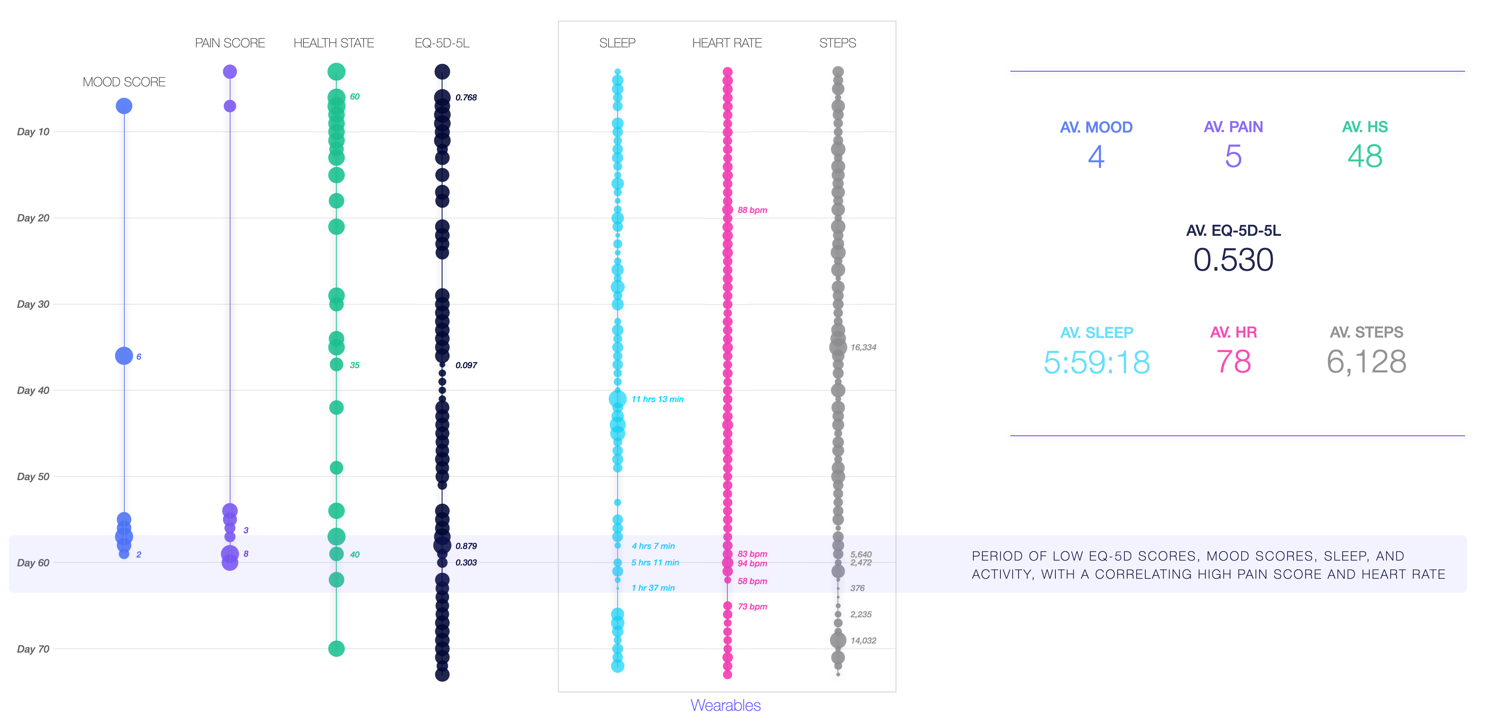
Particularly in the altered landscape that has followed in the wake of Covid-19, there is a demand for monitoring that avoids a requirement for in-person visits – addressing in turn a longstanding need for more streamlined study approaches with reduced turnaround times and burden upon patients themselves. With the additional benefit of capturing a more authentic picture of patient experiences and the real-world impact of any therapies day-to-day, digital platforms and wearable devices that allow for easier generation of this data are powerful game changers in delivering improved insights at a therapeutic efficacy, patient quality of life, adherence, and behavioural level.
These technologies support not only more powerful real-world evidence generation from the perspective of pharma and new therapies, but also hold more direct benefits for patients and their clinical teams. At an early intervention level through alerts generated through remote wearable and patient-reported outcomes (PRO) monitoring, we have already seen in practice the ability of ecosystems such as Sanius in helping patients identify potential upcoming challenges in their health. This has supported patients to proactively seek the clinical care needed to prevent further deterioration, following drops in measures such as blood oxygen saturation that would otherwise have been missed. Supported by detailed daily tracking, predictive insights, and new evidence or awareness of what is happening in their health, these approaches make a difference to patient lives at a long-term behavioural and lifestyle level, driving improvements that may in turn reduce the incidence of such emergency clinical events and translating to a better quality of life and outcomes.
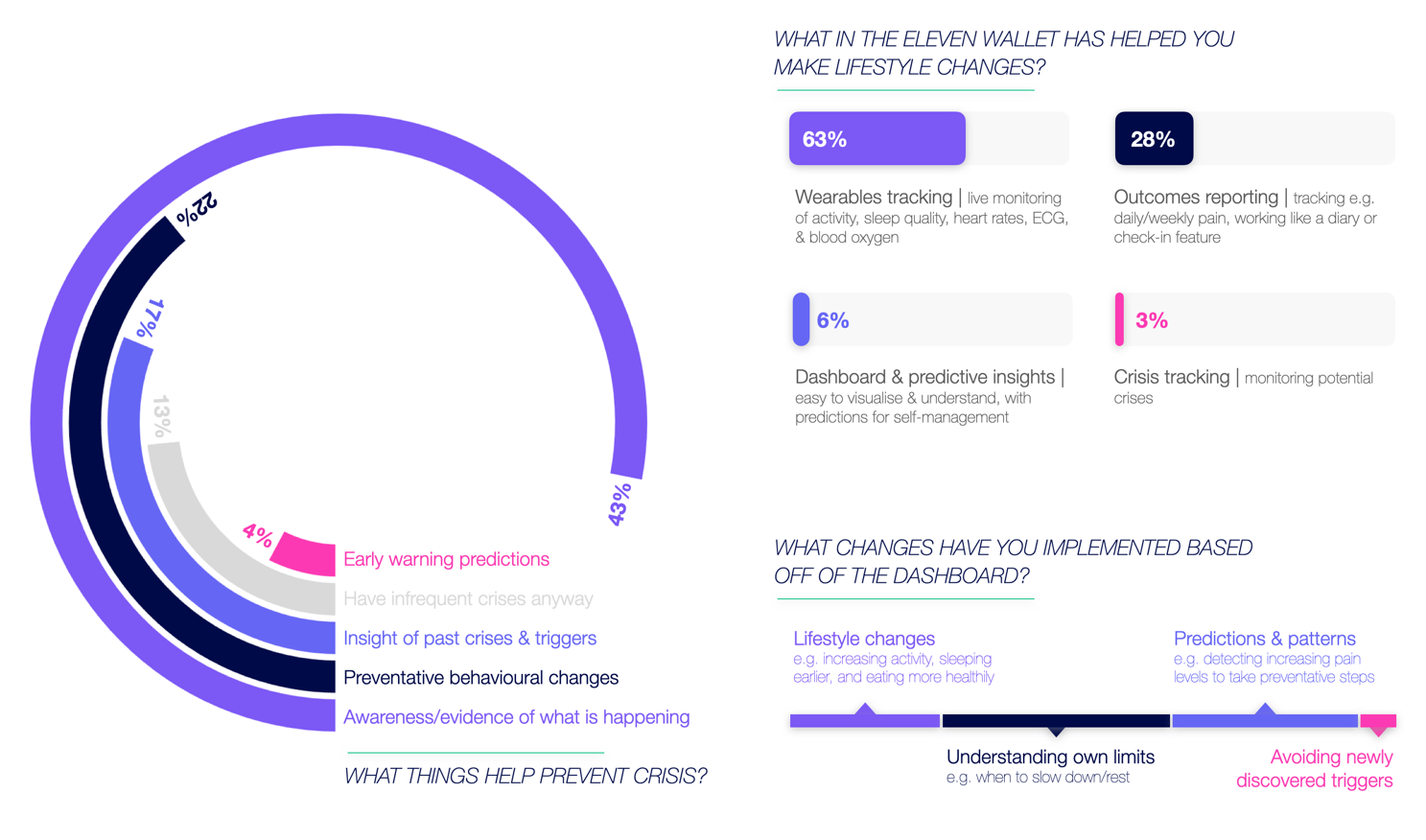
Indeed, particularly for rare diseases and historically under-supported conditions, such as Sickle Cell Disease, strengthening the baseline understanding, support ecosystems, and access to new medicines is critical. As such, ensuring that ongoing research into new therapies and diseases as a whole are equipped with better understanding across the care continuum – from hospital to home – sees the need for wider adoption of newer methods and advanced technology. With a focus not only on traditional clinical outcomes and patient physiological wellbeing, but also on critical quality of life measures, our ongoing work in the life sciences and patient support space has seen first-hand the true value of an encompassing care and technology ecosystem on patient wellbeing. So how do we develop the real-world insights to accelerate progress for our partners and patient communities?
Understanding PROs for Patients and Life Sciences | The Impact of Engagement in Outcomes
To better understand what engagement with digital PRO ecosystems looks like within the patient cohort and how this may link to their baseline characteristics, outcomes, and wearable-linked measures, analysis was conducted to compare these core factors between patients with different levels of engagement. This was indicated by each patient’s ‘PRO entry rate’ to ‘number of days engaged with Sanius’ ratio, and saw patients input key PRO data through a specialised digital portal via their smartphones or a web-based platform, collating both traditional EQ-5D measures and more basic 0-10 pain and mood scales
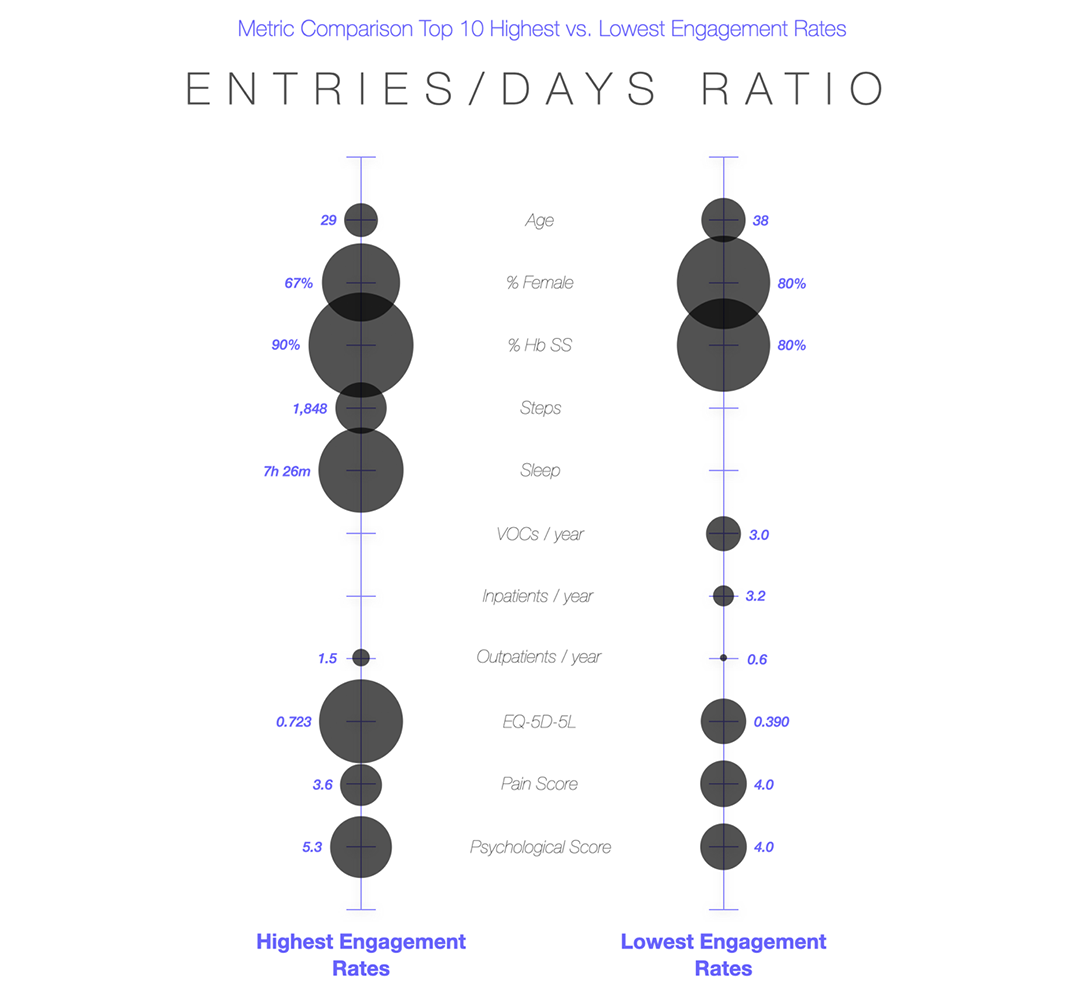
As may be expected in regards to adherence to newer technologies and digital approaches, the average age in patients with higher levels of engagement was almost 10 years lower than that of the lowest engagement band, at 29 and 38 years, respectively. It is possible that this low engagement with PROs similarly saw low adherence to the daily usage of their wearable device – no sleep or activity data being recorded for these patients.
At a genotype level, the two engagement bands also saw a difference in regards to the proportion of patients with Hb SS – at 90% in the highest engagement and 80% in the lowest engagement group. This may suggest higher levels of engagement in more clinically severe patients with a potentially stronger incentive to actively engage with this form of support and insights ecosystem. Interestingly, this did not appear to translate to the rate of healthcare utilisation in these patients, with a lower number of average vaso-occlusive crises (VOCs) and inpatient admissions per year, albeit a higher rate of outpatient attendances.
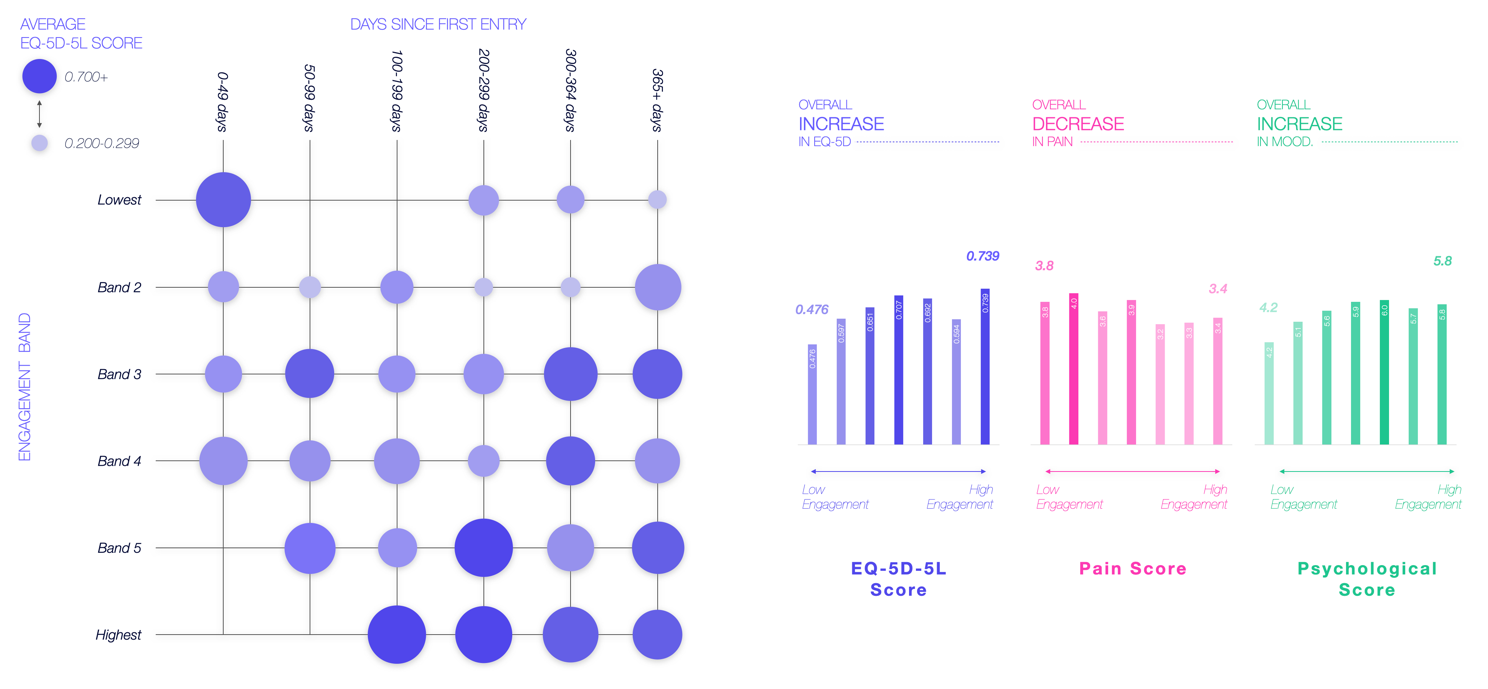
In line with lower rates of healthcare utilisation, higher rates of PRO completion were found to correlate with higher EQ-5-5DL – linked to a higher quality of life – and psychological (mood) scores, with a correlating drop in average pain scores. Whether this link represents a causal relationship between higher rates of active engagement with the ecosystem and patient health is uncertain, but could potentially represent a tendency in patients within the lower completion bands to engage with and record their QoL-linked metrics specifically during periods of difficulty, associated in turn with higher pain and lower mood scores.
While an early insight that forms an important launch for further consideration and curation in a research and trial monitoring context, this form of cohort-based insight builds an in-depth baseline for what are often poorly described diseases. With better understanding of patient engagement patterns and impacts, supported by the ability to explore more granular subgroup differences in terms of factors such as age, gender, genotype, treatment, and even the level of blood markers, Sanius ecosystem therefore provides a strong foundation from which to address specific research questions and enrich the understanding of vital QoL measures in target diseases.
Insights at a Patient Level
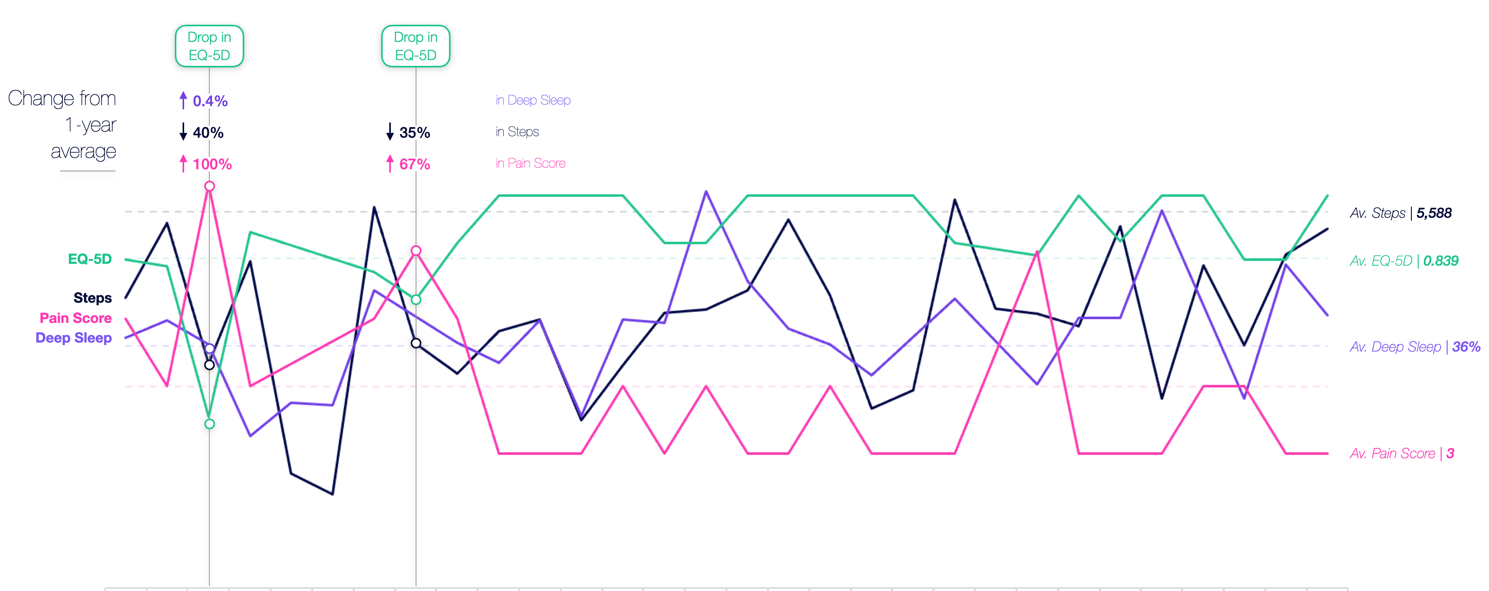
Each patient’s journey is unique to them, and monitoring at a day-to-day level is therefore vital to fully understanding what their typical health state looks like in order to identify any potential upcoming challenges or any changes following the initiation of specific treatments. Indeed, tracking of key metrics such as the EQ-5D and any correlating changes in measures such as pain score, sleep, and activity allows for highlighting of specific points of potential crisis.
Blending this against their medical record timelines and any self-reported medications or at-home interventions therefore allows patients to understand what such crises look like for them, their potential triggers, and what actions helped to ease or prevent them – supporting behavioural changes and proactive interventions. Furthermore, these insights provide clinicians with a vital record of their patients’ wellbeing at a daily level and away from healthcare settings, with a better understanding of each patient’s individual baseline and how best to prevent further deviations, or even drive future improvements to QoL and outcomes.
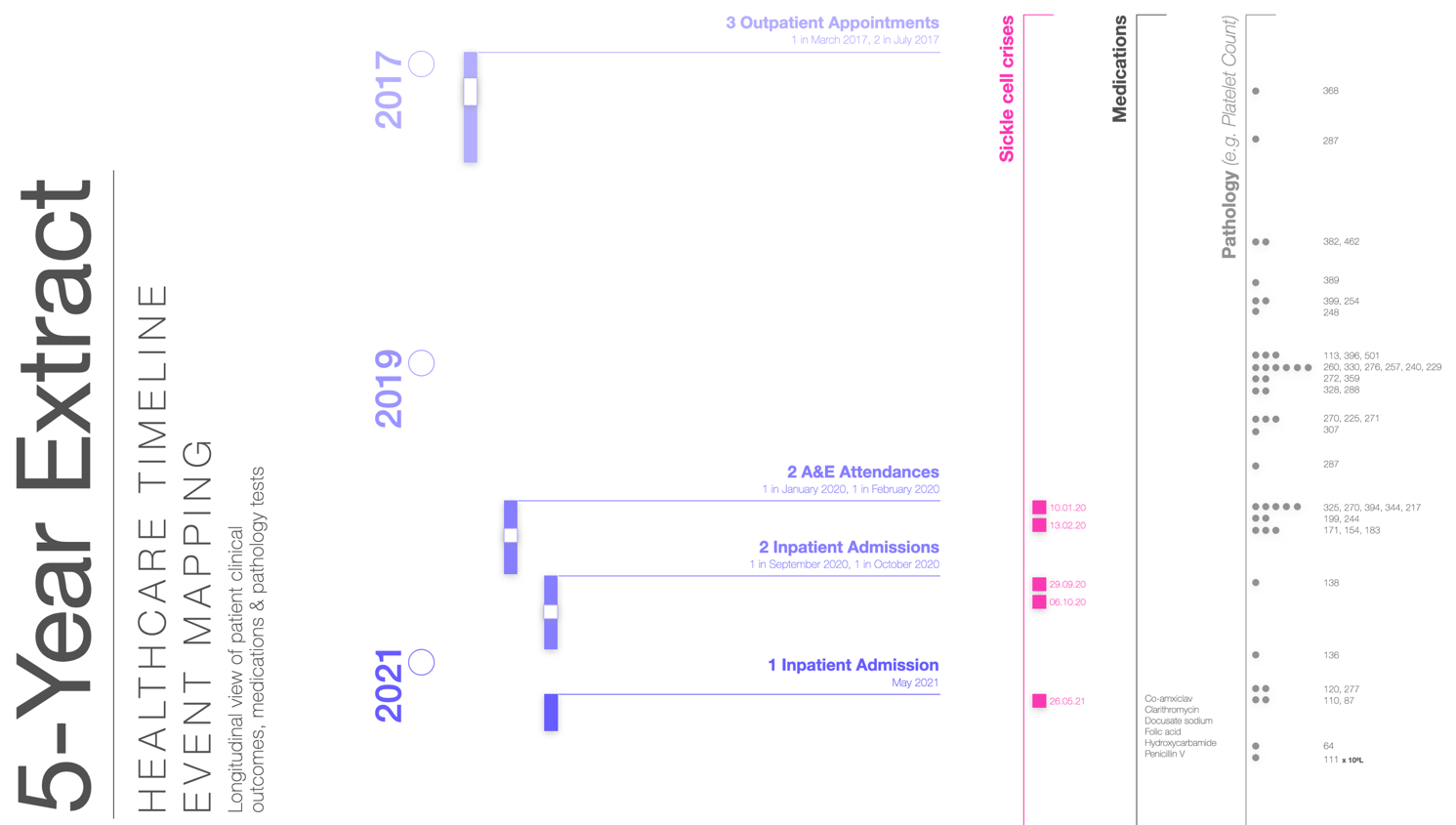
From patient and clinician to life sciences, subsequent integration of this depth of knowledge across the entire patient cohort therefore allows for powerful, granular real-world insight into the impacts of any new therapies post-initiation – creating a vital retrospective comparison point and prospective data capture ecosystem through which to derive better understanding of patient wellbeing day-to-day.
How We Can Help | Valuing Quality of Life in Deeper Insights and Improved Outcomes
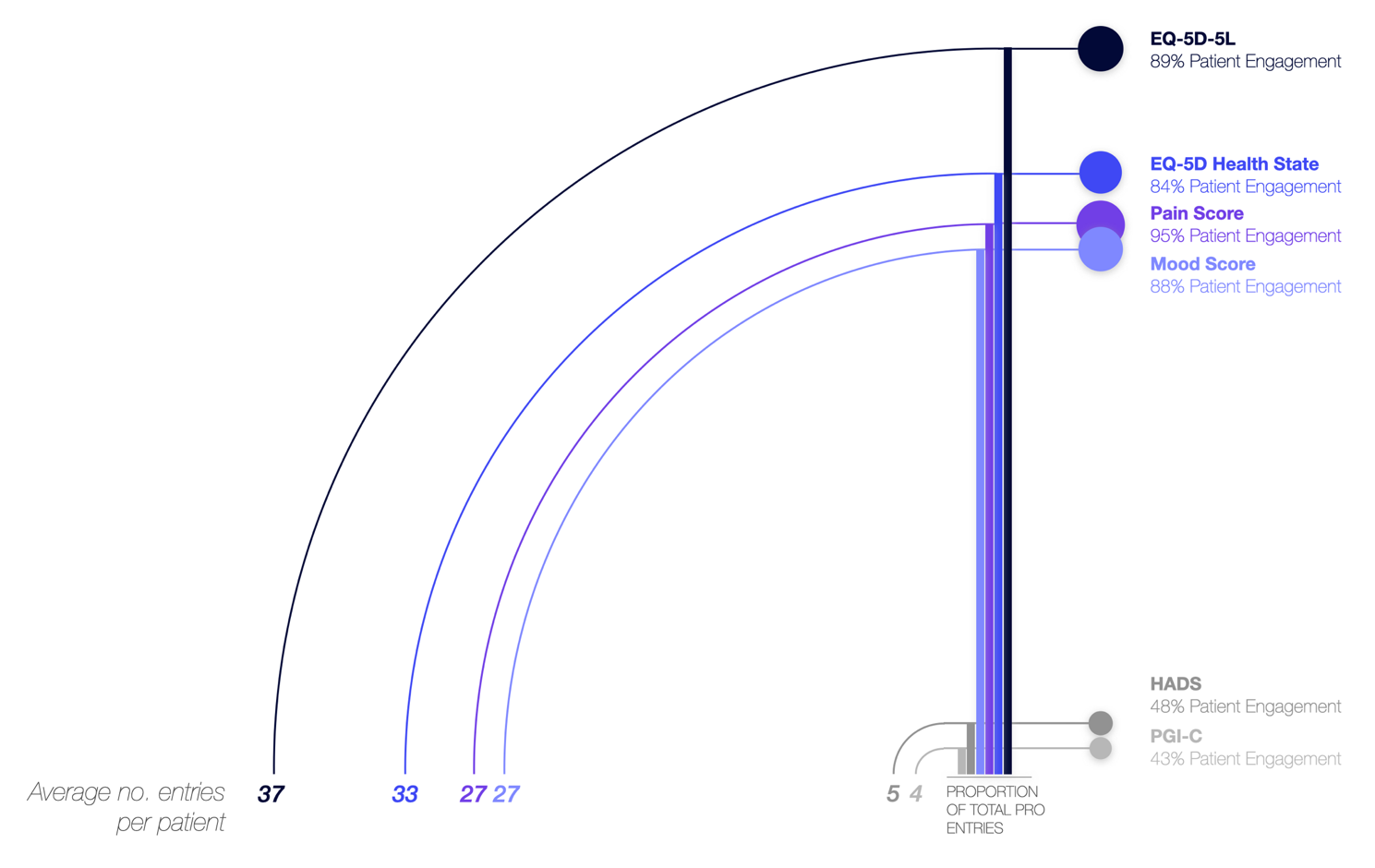
Patients, clinicians, and researchers alike know of the vital importance of enriched but validated insights into core QoL measures, alongside more clinical and physiological markers, in the process of improving patient outcomes and driving better access to novel therapeutics – particularly in rare or often overlooked diseases. Our work to date has seen us encounter the ongoing difficulties faced by many in research and trial settings around high quality PRO capture, both in discussions with our pharma partners and in past projects prior to the launch of Sanius. At the heart of our ecosystem is therefore the need to ensure that each component is designed with usability by patients and the value of generated insights for our clinical and life science colleagues in mind, patients supported each step of the way with a dedicated patient engagement team.
As a remote monitoring, advanced AI/ML technology-driven platform with improved patient self-management, clinical support, and research enrichment at its core, our multi-disciplinary approach to developing a truly powerful research base for clinicians and life sciences focuses on ensuring accelerated access to the innovations that will make a genuine difference to patients’ wellbeing, supported by a deeper understanding of both their own health and the disease itself. We welcome anyone who wishes to learn more about our ecosystem or potential opportunities to collaborate to contact us at info@saniushealth.com
The patient experience shared.
Join the Sanius Health Community
Register your interest below and a member of our team will follow up with you soon.
